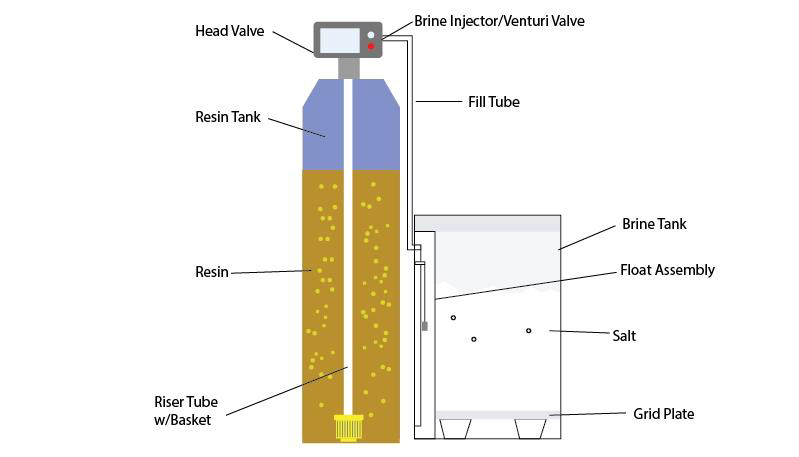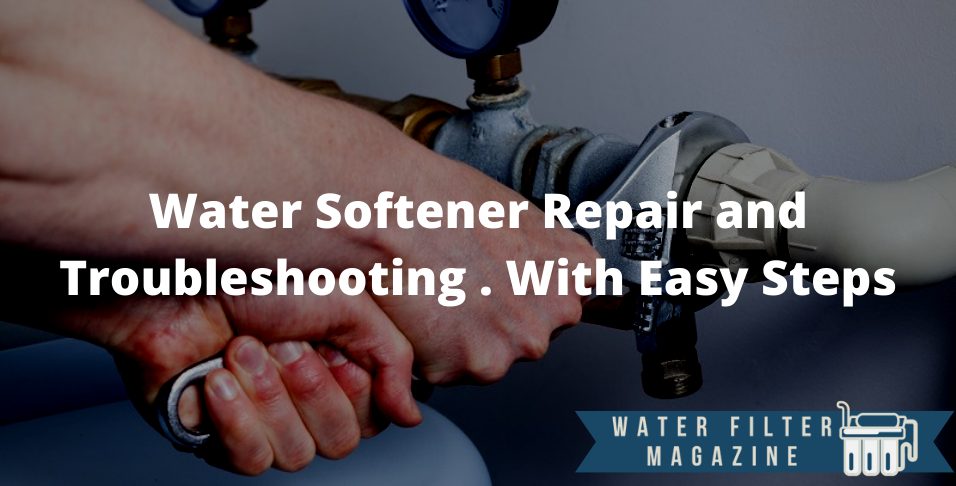 When going to the doctor you usually share your symptoms, so to establish what may be wrong with your water softener first you have to pay attention to what exactly is happening. Water softener troubleshooting is easy when done with care.
When going to the doctor you usually share your symptoms, so to establish what may be wrong with your water softener first you have to pay attention to what exactly is happening. Water softener troubleshooting is easy when done with care.
Monitor the symptoms. Some signs might be apparent, as some noise or leaking but others might take more attentiveness to notice. Such alarms will be harder to register unless you know what to look for. You may see them but pay no mind to them. So, it is best to get to know them as signs of a potential problem in your softening unit. All the below might be such:
- Your hair looks lifeless, feels dry and your scalp is itchy
- Your towels feel like you are using a scrub and your clothes are rough to the touch
- There are water stains on the surfaces and soap scum formed on the showerhead
- There is an odor coming from the water
- Trickling sound or small leaks coming from somewhere around the installation
If you put it in your mind to notice these things it might turn out that they are everywhere.
Another important topic to pay attention to is the most common issues that might occur in a water softener filtration system:
- Salt bridge
- Resin beads have been defuncted
- Motor failure
- Clogging
- Dirty filter
If you notice that your water softener isn’t using salt because brine is not being produced, then this might be caused by a salt bridge. The salt bridge is a thick and hard crust, which has developed over the water in the brine tank causing improper regeneration. Once you’ve located it you can turn off the water supply to your softener and remove it manually, using a long stick (broom handle). Insert the stick in the brine tank and carefully chip away at the salt bridge until you’ve crushed it. Use some kind of plastic container to take out any salt chunks.
When it comes to resin beads there is a lot to be said and a lot of reasons, they may have failures. Resin beads are a small skeletal structure, which is used as a media for the ion exchange mechanism that softens the water. They are susceptible to a lot of the activity that goes on during the process in the unit and the use of the system as a whole. Some of these mechanisms are:
- Oxidation (chlorine causes the beads to lose strength, swell, and retain moisture)
- Metal Fouling (reduces the beads capacity)
- Resin Attrition (broken beads causing reduced exchange sites)
- Water Hammer (shock interruption of pressure causing the beads to crack or break)
 Like any other mechanism that is motor-driven, the water softening system can experience motor failures. When you are choosing a system pay attention to this topic so you can apply prevention and minimize the risk of ending up with a unit that has a weak or faulty motor. Read through this guide for top-rated water softeners to get a better understanding of what is out there as options. Another good piece of advice would be to stay away from useless workarounds like water softener shower heads if you are trying to have soft water without the necessity of buying an installation. Check out this review on water softener shower heads to get a better understanding of why they don’t work.
Like any other mechanism that is motor-driven, the water softening system can experience motor failures. When you are choosing a system pay attention to this topic so you can apply prevention and minimize the risk of ending up with a unit that has a weak or faulty motor. Read through this guide for top-rated water softeners to get a better understanding of what is out there as options. Another good piece of advice would be to stay away from useless workarounds like water softener shower heads if you are trying to have soft water without the necessity of buying an installation. Check out this review on water softener shower heads to get a better understanding of why they don’t work.
Clogging can be caused by a number of things like a problem with your pump, pressure tank, a leak somewhere in the system, a clogged filter, or a problem with your water softener. It is usually apparent by the decrease of water flow. The first thing you have to do is establish for sure that the problem is in the water tank using the bypass valve. This will stop the water flow to the softener and when you run the faucet and see that the water flow is back to normal, then you can be sure that the trouble is with the water softener.
The most effective test is when you turn on the faucet, run the shower and flush the toilet. There are specific products that can be used for cleaning the resin inside the tank. Take half a cup of the cleaner and pour it into the brine well.
This may not be enough if there is a lot of iron in your water but there is a product for that as well which is used to dissolve rust. This type of product is usually in the form of powder, which you have to dissolve in water to make a solution and then pour into the brine tank. Doing this at least once a year will definitely prolong the life of the resin, which is a key player in your water softening system. Of course, it may be necessary to apply this cleaning procedure more than once a year if your water is derived from a well or has high levels of iron. When water is derived from a well, installation is very important and it is good to support the water flow with a pump. If it is a shallow well then, a trustworthy pump is necessary. Have a look at this review of top-quality shallow well pumps to get a better insight.
Last but most certainly not least the dirty filter is right up there with the salt bridge in terms of how often it occurs. The most important factor for any filtration system is filter replacement. Filters have to be replaced or cleaned (where applicable) in due time so that the system can work properly and also so you can protect your appliances and health.
The second step would be to establish where the problem is coming from. To do that you can use the method of reduction. To eliminate the problem coming from somewhere else (not the water softener) you can bypass the unit. All units have bypass valves, so just turn the valve and if the noise or leak is gone then you know where the problem is. When the problem is not noise or leak then first make sure you’ve eliminated all of the above-mentioned most common issues.
No matter what the problem is, by default one should always make an effort to use quality products for an expensive system like the water softener. Use this review of top-class salts for water softeners, choose a quality product and stick to it. Do the due diligence on the filters as well because their quality is also of great importance.

